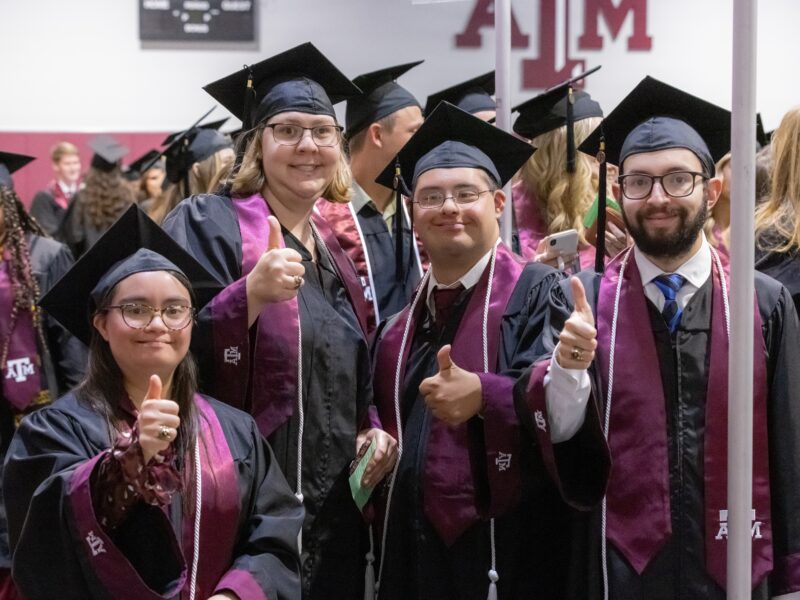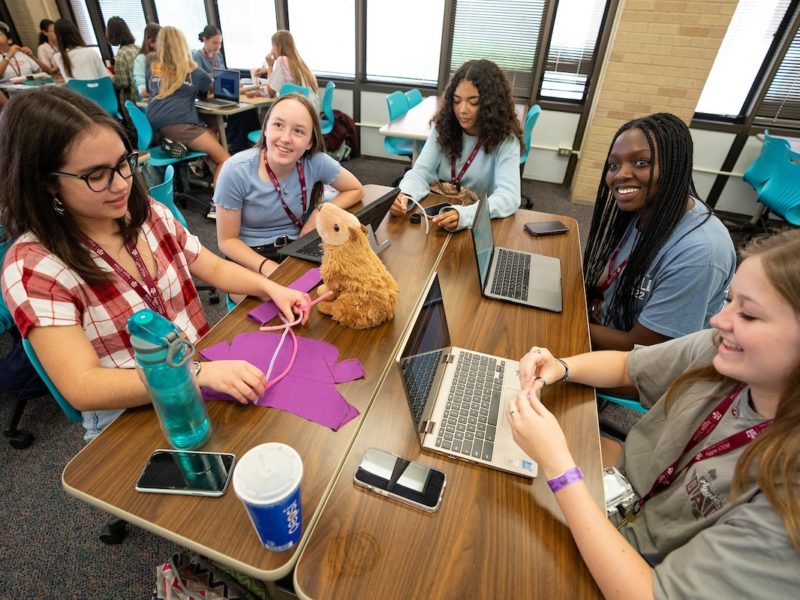Male Latinx Students In Texas Face Similar Challenges
According to the National Center for Education Statistics, Latinx students are enrolling in colleges and universities at historically high levels. Despite this, scholars find that degree completion rates are low, especially for Latinx male students.
According to research from Luis Ponjuán, associate professor in the Texas A&M University Department of Educational Administration and Human Resource Development, and co-author Susana Hernández, these students rely on their community cultural wealth to survive and thrive in higher education.
Community cultural wealth is defined as the total talents, strengths and experiences that students of color bring with them to their college environment. For Latinx males, an important part of this is familial capital, or family and friends. Ponjuán said these students often choose institutions near their home to rely on this support.
“In our study, we found that Latinx male students relied on their untapped resources found in their local Latinx communities and families to develop the fortitude to pursue a higher education degree,” Ponjuán said.
When familial support is lacking, students may seek a form of this support at their institution, whether through joining student organizations or engaging with faculty. When this community connection piece is completely lacking, Latinx male students may find it harder to persist in higher education.
To better understand this group’s educational experiences and find ways to better support and foster their academic success, Ponjuán examined the lived experiences of Latinx students at three types of institutions: predominantly white institutions (PWIs), Hispanic-serving institutions and historically Black colleges and universities.
“Regardless of institutional type, these students have similar challenges or issues in their adjustment to college — being aware of institutional resources, using their help-seeking behaviors and developing supportive relationships with faculty,” Ponjuán said.
Earlier research in this area highlighted that underrepresented students, regardless of their academic preparation, needed to become “college ready.” Ponjuán said this placed an inordinate amount of stress on these students to develop the necessary skills and find resources to help them successfully navigate college on their own.
He said these challenges are not a reflection of a deficit or shortcoming. Rather, Ponjuán said, it demonstrates students’ uncertainty of how to navigate unfamiliar and intimidating educational spaces “that do not support or develop a sense of belong for first-generation Latinx male students, regardless of institutional type, but especially at PWIs.”
Ponjuán hopes institutions will be proactive in helping all underrepresented students, but particular efforts should focus on male students of color, and especially in Texas, Latinx male students. He said there is a critical need for institutions to listen, learn and act from the voices of these students if they want to retain them and ensure they complete their degree.
Ponjuán’s research indicates that creating a positive educational experience can be accomplished by facilitating student engagement with faculty, making students aware of campus support resources and promoting Latinx organizations.
He also recommends institutions implement other proactive policies like readmission waivers, programs like faculty professional development opportunities to engage with Latinx male students, and practices, like student affairs counseling services, to help these students navigate their educational pathways.
“There is ample evidence that these students want to develop a sense of belonging to their campus, regardless of the type of institution,” Ponjuán said. “It is imperative that schools become more proactive, purposeful and intentional about their efforts to help Latinx male students, especially in these protracted pandemic times.”
This article by Heather Janak originally appeared on the College of Education & Human Development website.





